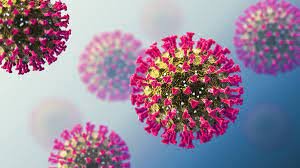
The emerging corona virus has long been associated with many brain-related symptoms, but how it reached the brain has remained a mystery until now.
According to whistleblowers, the mystery of how the novel coronavirus got into the brain has long puzzled doctors and experts in this global pandemic.
But now a new study has shown how the virus that causes Covid-19 disease hijacks the tunnels and bridges of tiny nanotubes and connects infected and diseased cells through them to nerve cells (neurons) and the brain. makes him sick
The research, published last week in Science Advances, shows how a pathogen can enter neurons without the main “gateway” of the ACE2 receptor (ACE2), which viruses normally attach to when they infect cells. he does.
Studies have shown that Covid disease is associated with many neurological symptoms.
These symptoms include cognitive disturbances such as loss of taste or smell, memory loss and problems concentrating, often known as ‘brain fog’, in the acute phase of the disease and in the long-term Covid syndrome.
However, the mechanism by which this viral disease reaches the brain remains a mystery.
In this new study, researchers from the Pasteur Institute and France’s CNRS Laboratories used advanced electron microscopy techniques to show that SARS-CoV-2 steals the scientific name for emerging coronavirus nanotubes.
Scientists have shown that healthy neurons become diseased when they come into contact with diseased cells.
These nanotubes are dynamic and unstable structures that form as a result of membrane fusion in distant cells and thus allow the exchange of cellular materials without the need for a specific receptor in the cells, i.e. without a natural means of entry and exit. cell cytoplasm
Previously, experts concluded that nanotubes play a role in exacerbating diseases such as Alzheimer’s and Parkinson’s, as they facilitate the transport of proteins responsible for these diseases.
According to The Independent, researchers have found viral genetic material in the brains of some patients that may explain neurological symptoms associated with chronic or severe Covid.
The scientists hope that these findings will lead to the discovery of alternative treatments, along with other research focused on blocking the entry of the virus through the ACE2 receptor to prevent the spread of the virus.
end of message /









